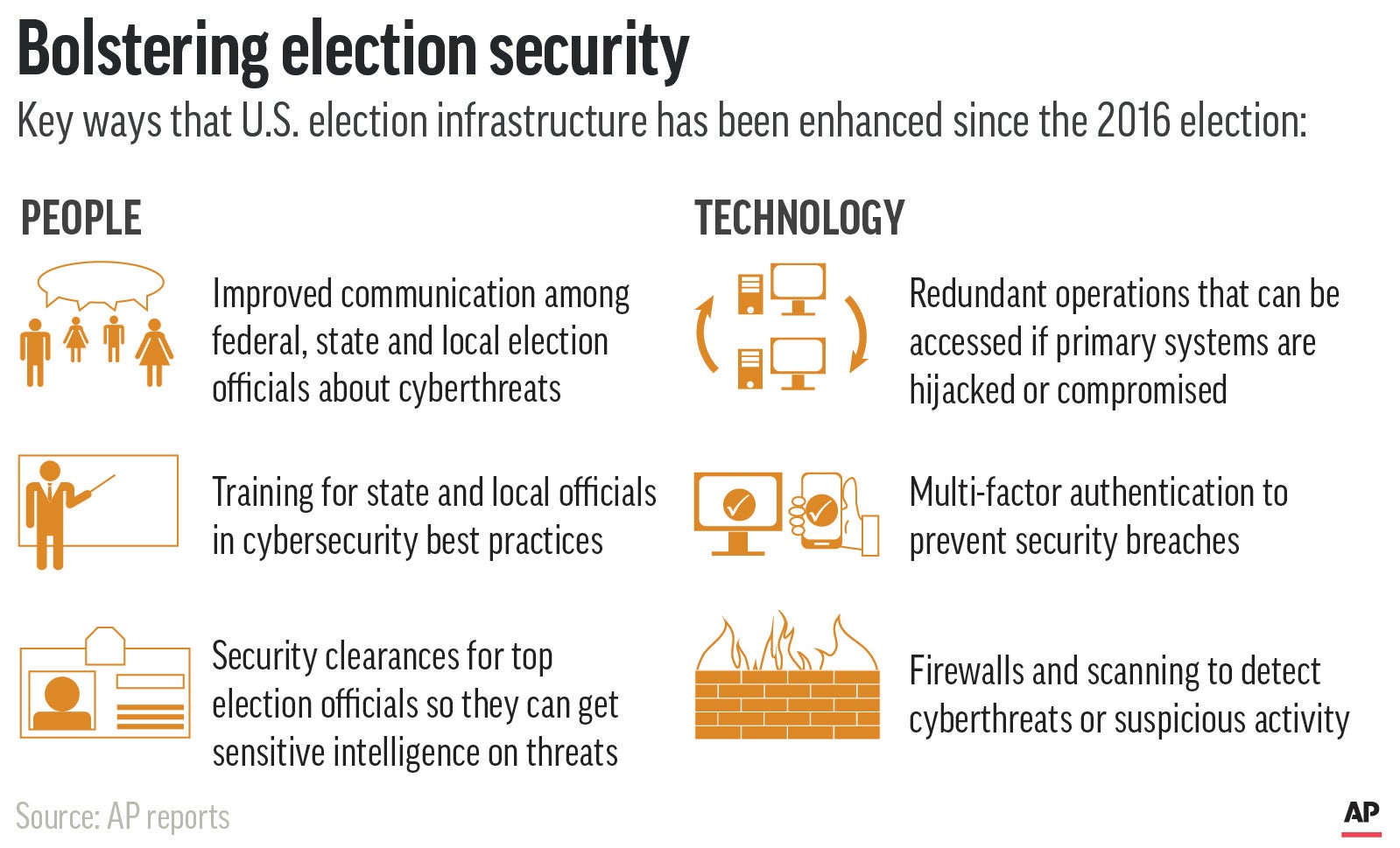Are the nation's voting systems secure?
The nation’s intelligence chiefs continue to warn that Russia, China and others remain interested in interfering in U.S. elections

Your support helps us to tell the story
From reproductive rights to climate change to Big Tech, The Independent is on the ground when the story is developing. Whether it's investigating the financials of Elon Musk's pro-Trump PAC or producing our latest documentary, 'The A Word', which shines a light on the American women fighting for reproductive rights, we know how important it is to parse out the facts from the messaging.
At such a critical moment in US history, we need reporters on the ground. Your donation allows us to keep sending journalists to speak to both sides of the story.
The Independent is trusted by Americans across the entire political spectrum. And unlike many other quality news outlets, we choose not to lock Americans out of our reporting and analysis with paywalls. We believe quality journalism should be available to everyone, paid for by those who can afford it.
Your support makes all the difference.WHAT STEPS HAVE BEEN TAKEN TO PROTECT THE NATION'S ELECTION SYSTEMS FROM POTENTIAL INTERFERENCE BY FOREIGN POWERS LIKE RUSSIA? HAVE VOTING SYSTEMS BEEN “HARDENED” IN ANY WAY?
Federal, state and local officials prioritized securing voting systems after Russia interfered in the 2016 election, breaking down bureaucracy to improve communication of potential threats, conducting security reviews and installing network sentinels to detect known cyberthreats and suspicious activity.
A key step was the January 2017 decision by the outgoing Obama administration to designate the election systems as “critical infrastructure” on par with nuclear reactors, banks and the electrical grid. The Department of Homeland Security and its cybersecurity agency have since worked to build relationships with election officials, giving top state election officials security clearances so they can quickly receive sensitive threat intelligence.
After the 2016 interference, state election officials complained that they were not alerted until nearly a year later that Russians had conducted extensive scanning of election systems, specifically targeting voter registration systems.
Communication is vastly improved heading into November, though the threat is unchanged. U.S. intelligence chiefs continue to warn Russia, China and others could interfere in the presidential election beyond so-called “information operations.” There is been no indication as yet of any cyber-related attacks directed at election systems.
One of the most feared threats is a well-timed ransomware attack that could scramble or impede access to voter registration data. State election officials have been working to build redundancies into their systems so they can recover quickly in the event of an attack.
Beyond providing comprehensive security assessments, federal officials also offer routine scanning for vulnerabilities and training around best practices. While experts say improvements have been made, they are most concerned about smaller election offices with limited IT and cybersecurity budgets.
Layers of security, including firewalls, threat-detection sensors and multi-factor authentication protocols, have been added to protect voter registration systems. Federal officials noted this summer, however, that adoption of best practices in some places was lagging and it was taking longer in some cases to fix problems identified in federal security reviews.
___
This is a new series from the AP dedicated to answering commonly asked questions from our audience about the 2020 U.S. presidential election. AP’s Advance Voting guide brings you the facts about voting early, by mail or absentee from each state: https://interactives.ap.org/advance-voting-2020/